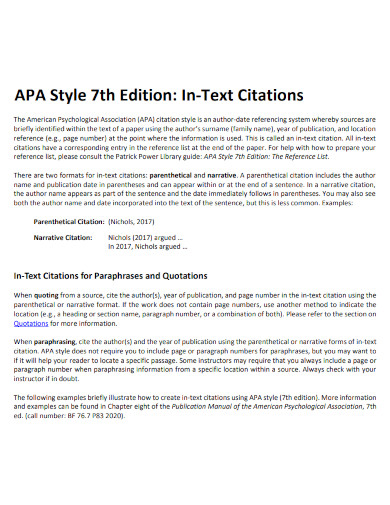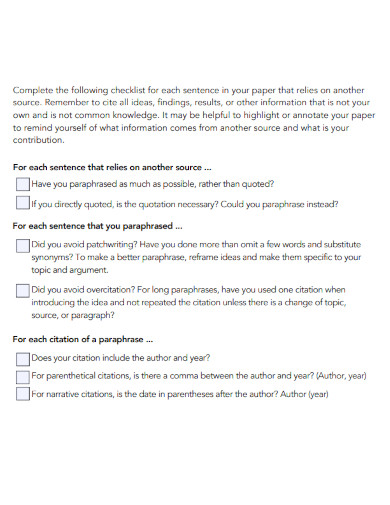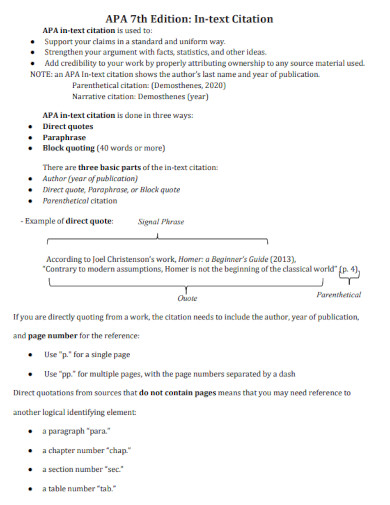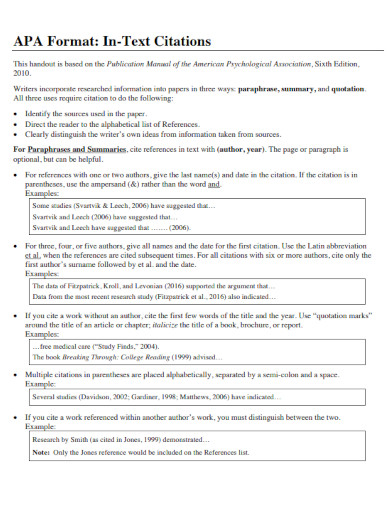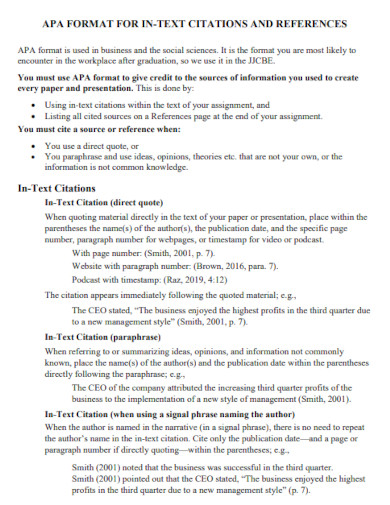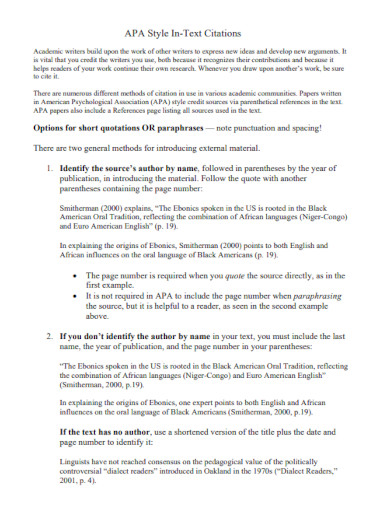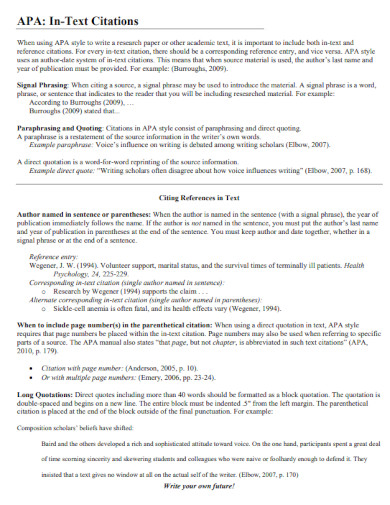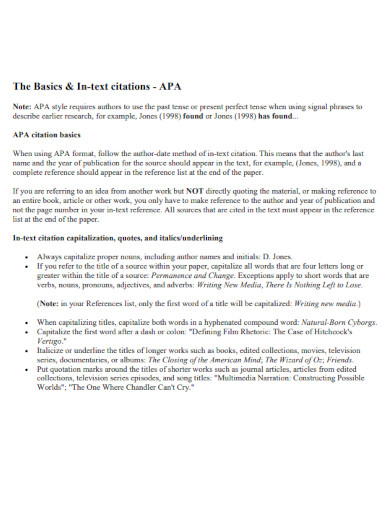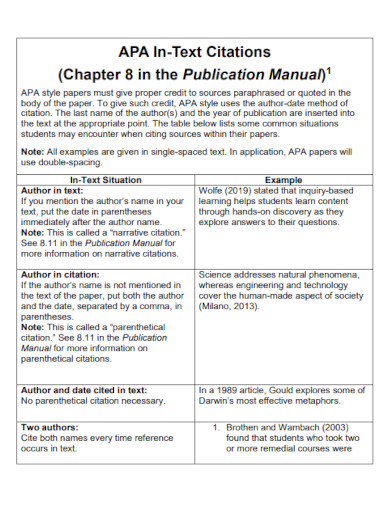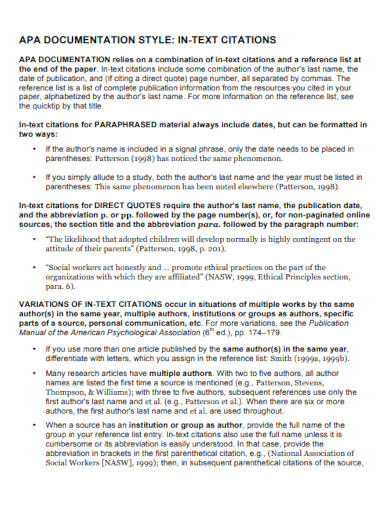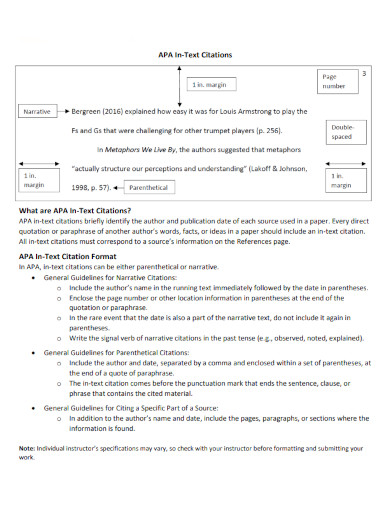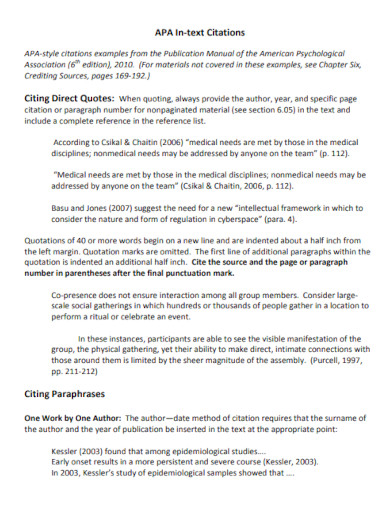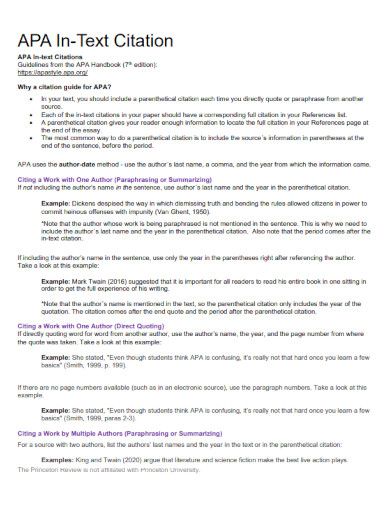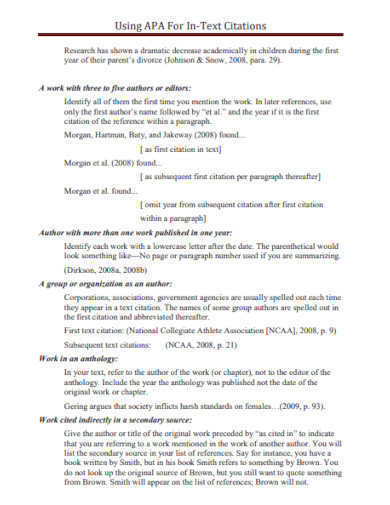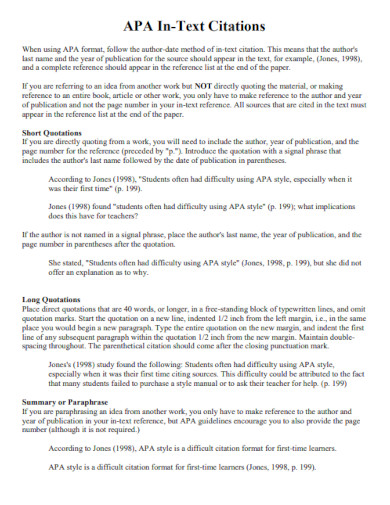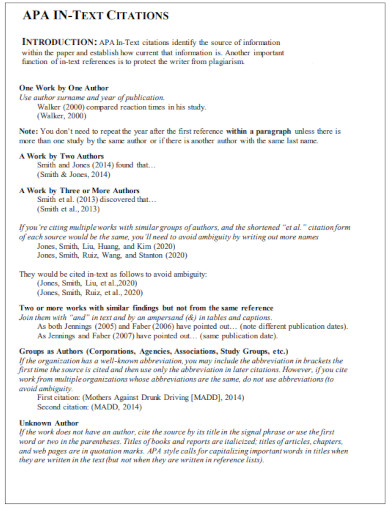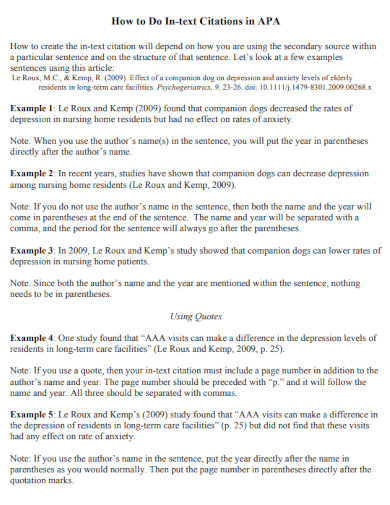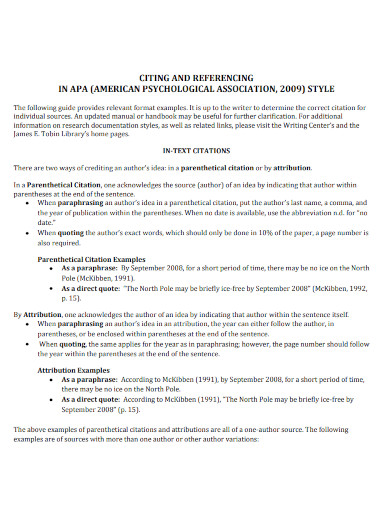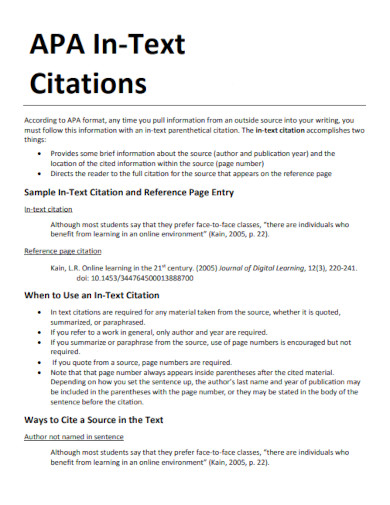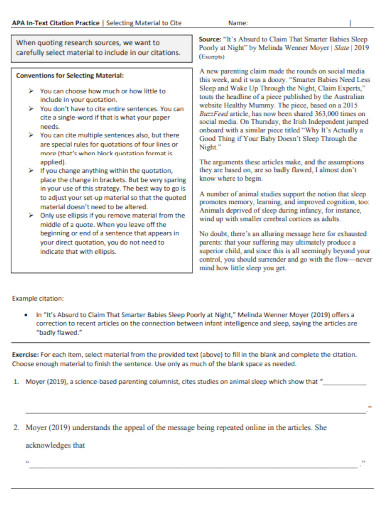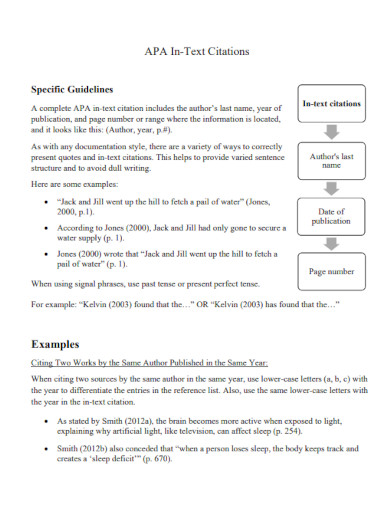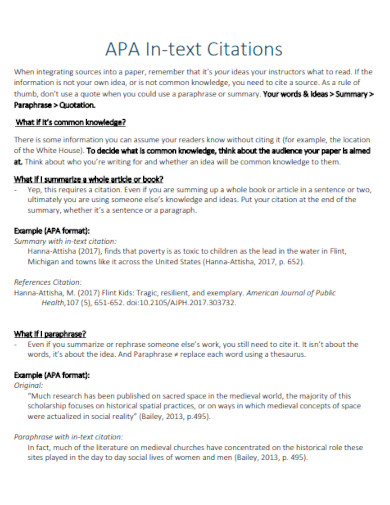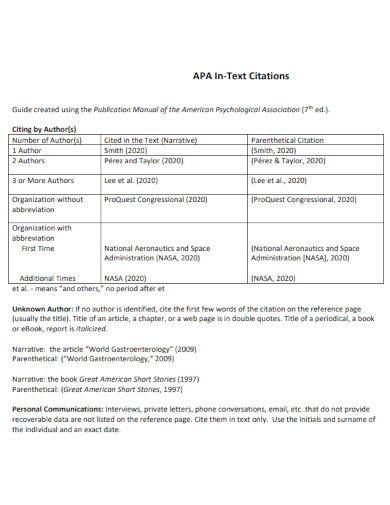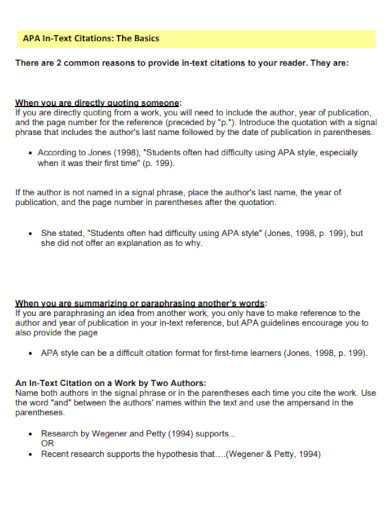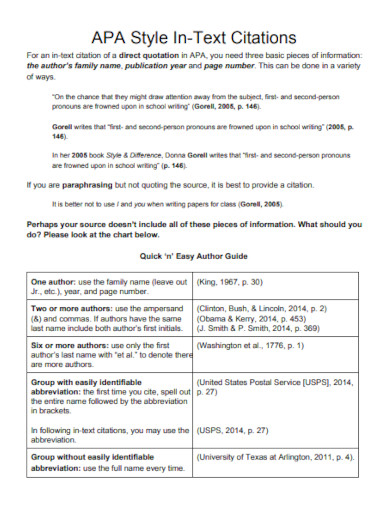24+ APA In Text Citation Examples to Download
When writing a research paper through the scientific method, it is important to ensure that the data you are using is from a reliable source. Not only that but you should also credit these sources to honor and avoid any issues about plagiarism in the text you are writing. APA In-text citation is a written credit used by researchers to easily indicate the sources of the referred data while providing credit to the author of the referred article.
1. APA 7th Edition In-Text Citation
2. APA In-Text Citation Checklist
3. APA In-Text Citation Sample
4. APA In-Text Citation Format
5. APA In-Text Citation References
6. APA Style In-Text Citations Article
7. APA In-Text Citation Owl Purdue
8. APA In-Text Citation with Title Page
9. APA In-Text Citation Manual
10. APA Documentation In-Text Citation
11. APA In-Text Citation Example
12. APA In-Text Citation 6Th Edition
13. Student APA In-Text Citation
14. Using APA For In-Text Citations
15. University APA In-Text Citation
16. APA In-Text Citation PDF
17. APA In-Text Citation Book With Quotes
18. APA In-Text Parenthetical Citation
19. APA In-Text Citation Page Entry
20. APA In-Text Citation Worksheet
21. APA In-Text Citation
22. College APA In-Text Citation
23. APA In-Text Citation With Authors
24. APA In-Text Citation Website No Author
25. APA In-Text Citation with Multiple Authors
What Is an APA In-text Citation?
The American Psychological Association or the APA has a specific format for researchers and scholars undertaking quantitative or qualitative research about psychology. In-text citations in the APA format act as the credits and the reference to a specific quote, data, or statistic from an adjacent source. These citations often come in the form of a parenthetical citation, which denotes the author, page, and date of publication of the research. Another type of citation is the narrative citation, which uses the author’s parenthesis date format, and is used when the writers refer to the author in the text. The in-text citation will need to follow a specific outline or outline format so that the whole text has a consistent theme, tone, and context.
How to Use In-text Citation
The proper usage of in-text citations will ensure that the data you will refer to is not plagiarized and comes from a reliable resource. You can also cite a website in APA format to use as a reference for your data. These citations must be stated directly adjacent to the data and must have their full reference cited on the reference page.
Step 1: State a Data, Image, Quote, or Statistic Obtained from a Reference
Begin by directly quoting, paraphrasing the data, or inserting the image or statistic obtained from an adjacent reference to the body of your research paper. (See surveys, survey questions, and case studies) Ensure that the data inserted is relevant to the research question or topic of your paper. Note when directly quoting a statement from your reference, be sure to use quotation marks at the start and end of the quote.
Step 2. Insert either The Parenthetical Citation or the Narrative Citation
After you have stated the data, image, quote, or statistic, you will need to discern the type of citation you will need to insert into the text. You should use a parenthetical citation when you need to refer to data, quotes, images, or statistics obtained from the reference that does not directly state the author. While a narrative citation is used when the text directly indicates the author/s of the reference.
Step 3: Update the Reference List
When you have finished inserting your In-text citation, you will need to update the reference lists. This is where you will be indicating the full title of the research, the authors, and the other minute details of the referred article.
Step 4: Repeat until You Finish
You will need to repeat steps one through three until you have completed or finished writing your paper. The reference list or bibliography should be at the end of your research paper.
FAQs
Why do references require in-text citations in the body of the text?
APA In-text citations allow the reviewers and readers to know where a specific quote or statistic comes from. A thesis usually requires reliable backing to ensure that the problem, niche, or issue that the research is tackling hasn’t been done yet. Previous research will also solidify the stance of the research when it comes to the relevancy of the problem, niche, or issue your research is trying to solve.
Where do I place the full references used by the in-text citations?
In-text citations also provide credits to the authors of the referred article, and can also be used to quote a statement from a previous research word-per-word without incurring any issues regarding plagiarism. The full reference used by the in-text citation is located at the end of the thesis under the References section of the thesis or research paper.
Why do I need to care about using APA in-text citations in my article?
APA in-text citations allow your research paper or thesis to gain credibility and reliability from past research done on adjacent topics related to your research topic or statement. Other than credibility and reliability, past research will also prove the relevance of your thesis statement as this can greatly affect the outcome of your research.
APA citations will always be listed in the text of the research paper or thesis you are working on. These will not only lend credibility to your research but will also ensure that whatever topic you are working on is either needed or relevant. APA citations will also ensure that you are not copying or plagiarizing any past research.


